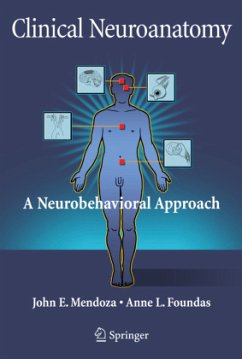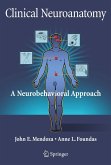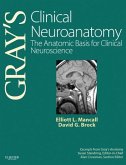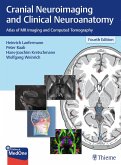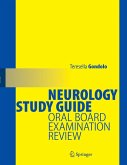Clinical Neuroanatomy offers an extensive review of higher cortical - behavioral functions and their anatomical substrates. The book begins with a review of the basic internal and external morphology, major nerve and fiber tracts, behavioral correlates, and clinical syndromes associated with spinal cord, brain stem, and cerebellum, reacquainting readers with the functional anatomy of the subtentorial central nervous system. The central chapters offer more detailed, integrated, and, at times, theoretical models of cortical systems and their internal organization. Additional chapters highlight vascular anatomy and neurochemical systems. Nearly 300 illustrations help identify key structures and pathways, as well as providing clinical and pathological examples.
A major focus of clinical neuropsychology and cognitive-behavioral neurology is the assessment and management of cognitive and behavioral changes that result from brain injury or disease. In most instances, the task of the neuropsychologist can be divided into one of two general categories. Perhaps the most common is where patients are known to be suffering from identi?ed neurological insults, such as completed strokes, neoplasms, major head traumas or other disease processes, and the clinician is asked to assess the impact of the resulting brain damage on behavior. The second involves differential diagnosis in cases of questionable insults to the central nervous system. Examples of the latter might be milder forms of head trauma, anoxia and dementia or suspected vascular compromise. In either instance, understanding the underlying pathology and its consequences depends in large part on an analysis of cognitive and behavioral changes, as well as obtaining a good personal and medical history. The clinical investigation will typically include assessing problems or changes in personality, social and environmental adaptations, affect, cognition, perception, as well as sensorimotor skills. Regardless of whether one approaches these questions having prior independent con?rmation of the pathology versus only a suspicion of pathology, a fairly comprehensive knowledge of functional neuroanatomy is considered critical to this process. Unfortunately as neuropsychologists we too frequently adopt a corticocentric view of neurological de?cits. We recognize changes in personality, memory, or problem solving capacity as suggestive of possible cerebral compromise.
A major focus of clinical neuropsychology and cognitive-behavioral neurology is the assessment and management of cognitive and behavioral changes that result from brain injury or disease. In most instances, the task of the neuropsychologist can be divided into one of two general categories. Perhaps the most common is where patients are known to be suffering from identi?ed neurological insults, such as completed strokes, neoplasms, major head traumas or other disease processes, and the clinician is asked to assess the impact of the resulting brain damage on behavior. The second involves differential diagnosis in cases of questionable insults to the central nervous system. Examples of the latter might be milder forms of head trauma, anoxia and dementia or suspected vascular compromise. In either instance, understanding the underlying pathology and its consequences depends in large part on an analysis of cognitive and behavioral changes, as well as obtaining a good personal and medical history. The clinical investigation will typically include assessing problems or changes in personality, social and environmental adaptations, affect, cognition, perception, as well as sensorimotor skills. Regardless of whether one approaches these questions having prior independent con?rmation of the pathology versus only a suspicion of pathology, a fairly comprehensive knowledge of functional neuroanatomy is considered critical to this process. Unfortunately as neuropsychologists we too frequently adopt a corticocentric view of neurological de?cits. We recognize changes in personality, memory, or problem solving capacity as suggestive of possible cerebral compromise.
From the reviews: "Clinical Neuroanatomy: A Neurobehavioral Approach is an outgrowth of seminars requested by neuropsychology interns and residents ... . Readers will be impressed by the authors' attention to explaining the limitations of current anatomical and physiological knowledge and reasons for the often confusing overlapping descriptions of various structures. ... the work remains a laudable effort and worthy of consideration, not only by neuropsychologists but also as a valuable addition to one's reference library by all psychologists who intend to work in health care." (John E. Carr, PsycCRITIQUES, Vol. 53 (31), 2008) "This book describes the role of both higher cortical and subcortical structures in understanding neurological deficits. ... Students and clinicians in neuropsychology are the primary audience, but the book is also relevant for 'behavioral and traditional neurologists, neuropsychiatrists, and others who have an interest in exploring the mysteries of brain-behavior relationships' ... . helps readers to understand brain structure and function from both the vantage point of normal behavior and pathology." (Gary B Kaniuk, Doody's Review Service, October, 2008) "Tulane Medical School clinical neuropsychologist Mendoza and behavioral neurologist Foundas team up to provide an in-depth overview of higher-order functions, their anatomical and neurochemical substrates, pathology, and theories of functional brain organization. ... An outgrowth of seminars to neuropsychology interns and residents ... . It is also suitable for other clinicians who work with the neurologically impaired." (SciTech Book News, June, 2008)

